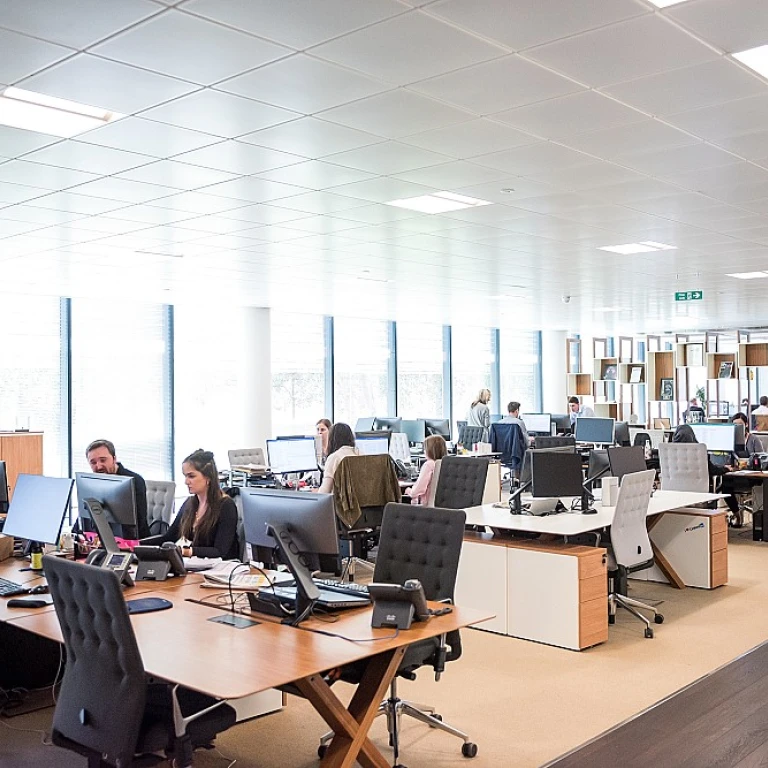
Understanding Heat Treatment in Modern Industries
Exploring the Essence of Heat Treatment
Understanding the fundamentals of heat treatment is essential as it plays a pivotal role in various modern industries. Heat treatment, or tratamiento térmico, involves the thermal processing of materials, primarily metals like steel, to alter their physical and mechanical properties without changing their shape. This process of heating and cooling can enhance the properties such as strength, ductility, and hardness, essential for specific manufacturing applications.
Industries globally invest in heat treatments to enhance product quality and performance. The process can involve several different treatments such as annealing, quenching, and tempering, each designed to achieve distinct outcomes depending on the requirements of the project. For example, annealing is used to soften metals like steel, allowing for more effective machining and improved electrical properties.
The energy requirements of heat treatments are significant, making energy management crucial for minimizing costs and environmental impact. However, the advancements mentioned in later sections are introducing more efficient options, contributing to a lower "cost-per-unit" impact on production.
Innovative Technologies Transforming Heat Treatment
Emerging Technologies Redefining Heat Treatment Processes
The landscape of heat treatment in manufacturing has been significantly altered by a slew of innovative technologies. As industries move towards more sustainable practices, the integration of technology in heat treatments like tratamiento térmico has expanded our capabilities. Here's a look at some transformative technologies and their impacts.
- Advanced Heating Methods: The adoption of high-frequency induction heating presents a great leap in efficiency, offering precise control over the heating process. This method reduces energy consumption and improves the properties of steel and other materials, ensuring better performance of las piezas.
- Simulation and Modeling Software: Modern software solutions allow businesses to simulate heat treatments before implementation, optimizing the process. This technology aids in project management by minimizing trial errors and enhancing product consistency.
- Vacuum Heat Treatment: Realizing the potential of vacuum environments, industries have embraced vacuum heat treatments. This technique limits oxidation and decarburization, maintaining the material's integrity and enhancing its lifespan.
- High-energy Techniques: Using concentrated energy sources like lasers for treatments offers precision hardening; metals achieve superior surface hardness with minimal distortion.
These technologies continue to push the boundaries of what's possible. For more on how plug-and-play solutions are evolving in this field, explore the future of plug-and-play solutions in work tech. The direction taken by these technological strides not only enhances current manufacturing capabilities but prepares the stage for forthcoming young inventions. As companies implement these innovations, understanding their scope and advantages remains critical for maximum utility.
Impact on Manufacturing and Production
Revolutionizing Manufacturing with Heat Treatment Innovations
High-tech advancements in heat treatment processes have significantly impacted the manufacturing and production landscapes. One of the essential aspects worth mentioning is the evolution of technology in the heating processes, leading to improved properties of materials such as steel, enhancing their durability and performance. This is particularly vital in industries requiring materials that can withstand great stresses and high temperatures. Heat treatments are pivotal when it comes to the enhancement of properties in las piezas and contribute significantly to energy efficiency. With modern technologies, the efficient management of energy consumption during the tratamiento termico becomes increasingly manageable and sustainable, aligning with the growing emphasis on eco-friendly production. Innovations like laser and induction heating, as well as controlled atmosphere environments for heat treatments, streamline the process, resulting in superior outcomes. These advanced processes allow the precise control of temperature and cooling rates, essential for achieving desired material characteristics and lowering the los in production efficiency. Though the implementation of these technologies requires an upfront investment, the long-term benefits, including reduced energy costs and better management of resources, are invaluable. As these advancements in heat treatment continue to shape the future of manufacturing, they promise not only improved product quality but also a more sustainable approach. For a deeper dive into how these technologies intersect with broader industry trends, you might find discussions around can AI master the art of crafting compelling application essays compelling, as they highlight the integration of technology across diverse sectors.Challenges in Implementing New Technologies
Overcoming the Hurdles of New Heat Treatment Technologies
As industries strive to adopt innovative technologies in heat treatment, several challenges arise that can hinder their seamless integration. These obstacles often revolve around the complexity of new systems, the need for skilled personnel, and the financial implications of upgrading existing infrastructure.
One of the primary challenges is the complexity of new technologies. Advanced heat treatment processes, such as those involving high-precision control of heating and cooling cycles, require sophisticated equipment and software. The integration of such technology demands a comprehensive understanding of both the technical and operational aspects, which can be daunting for companies accustomed to traditional methods.
Skilled workforce is another significant barrier. The shift towards more advanced heat treatment methods necessitates a workforce that is well-versed in modern technologies. This requires substantial investment in training and development, which can be a considerable burden for companies, especially small and medium-sized enterprises. The lack of experienced personnel can lead to inefficient project management and suboptimal utilization of new systems.
Moreover, the financial impact of adopting new heat treatment technologies cannot be overlooked. Upgrading existing systems or installing new ones involves significant capital expenditure. Companies must evaluate the return on investment carefully, considering both the short-term costs and long-term benefits such as improved energy efficiency and enhanced properties of treated materials like steel.
In addition to these challenges, there are concerns related to energy consumption. While modern technologies often promise greater energy efficiency, the initial transition phase may lead to increased energy usage as systems are optimized. This can be a critical factor in industries where energy costs are a major concern.
Despite these challenges, the potential benefits of adopting new heat treatment technologies are substantial. By addressing these hurdles through strategic planning and investment in training, companies can position themselves to take full advantage of the advancements in this field, ultimately leading to more efficient and effective heat treatments for las piezas and other components.
Future Trends in Heat Treatment Technology
Anticipating Future Possibilities with Heat Treatment Technology
The world of heat treatment is poised for substantial change as new technologies develop. Innovation in heat treatments is not only enhancing the properties of materials such as steel but also optimizing the overall process termico to minimize energy consumption and improve efficiency.
Today's heat treatment operations must adapt to the constant evolution of technology. This adaptation often involves integrating cutting-edge systems into existing processes. For instance, advanced automation and control systems are enabling more precise heating and cooling cycles, allowing companies to accurately tailor treatments to specific material requirements. The availability of data-driven management systems also introduces new possibilities for monitoring and optimizing tratamiento termico with unprecedented precision.
As production demands grow, so does the need for treatments that can cater to high volumes without compromising quality. Smart digital technologies and machine learning systems are offering tailored solutions that ensure energy savings and precise process management, building on the foundation laid by past technological innovations.
One of the key drivers of change is the push toward sustainability. In searching for greener methods, the industry is focusing on reducing the amount of energia consumed. Some companies are now exploring alternative heating methods, such as induction and resistance heating, to cut down on the environmental impact and increase their effectiveness in providing superior tratamiento.
Looking forward, the industry can anticipate a greater interconnection of global heat treatment projects. As international standards evolve, it becomes crucial for companies to keep track of the advancements offered by new technologies and adopt global best practices for consistent and high-quality production capability. Furthermore, maintaining flexibility will allow businesses to rapidly respond to emerging market needs and technological advancements.
Case Studies: Success Stories in Heat Treatment Innovation
Real-World Examples of Heat Treatment Innovations
Exploring the impact of technological advances in heat treatment reveals fascinating success stories across various industries. Advances in los heat treatment technology have propelled the automotive and aerospace sectors, allowing them to meet stringent performance standards while optimizing efficiency.
In the steel industry, innovative heat treatment processes have improved the mechanical properties of materials. One notable project introduced cutting-edge methods for managing high-temperature thermochemical treatments. This approach not only enhanced the material properties but also achieved significant energy savings, illustrating the termico tratamiento's great potential for sustainable manufacturing.
Los tratamientos termicos en la manufactura han cobrado relevancia as companies continue to push the boundaries of what's possible. For instance, in the treatment of automotive components, new heating technology has allowed manufacturers to maximize the properties of steel while reducing the energy consumption involved in the heating and cooling processes. Such advances demonstrate the importance of balancing the technical aspects of heat treatments with practical environmental considerations.
Another significant development involves the adaptation of heat treatment technologies to enhance the durability and performance of critical aerospace components. By employing advanced process management systems, engineers have achieved unprecedented precision in tailoring treatments to specific materials, ensuring optimized performance in extreme environments.
These case studies highlight the transformative impact of innovative heat treatment technologies, confirming their potential to redefine manufacturing and production dynamics. They also underscore the challenges faced in implementation but proudly reflect the progress industries have made in harnessing 21st-century technology to attain superior producto quality and operational efficiency.












